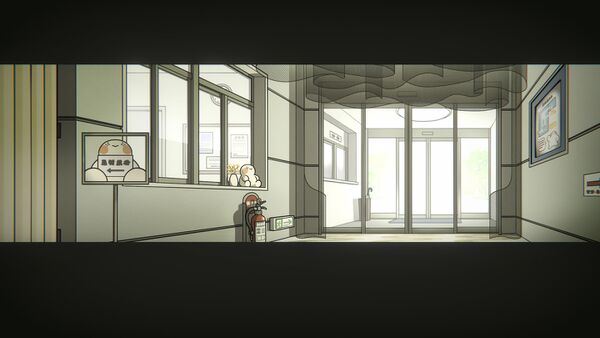World
 |
"Doctor, it seems like FORMAT has a few tasks for you."
This article could use some work. Here's what's left to do:
|
The World page is a compilation of the worldbuilding aspects of MINDHACK; as the game continues to develop, separate pages may be created and linked from this page, depending on how large the documentation goes.
General worldbuilding
Many factors - but mainly various developer commentary - hint at the game's world being a dystopia. First of all, the world was inspired by old science fiction stories, such as 1984[1]. The public order was said to be in a bad state as well[2], and this can be further inferred from the protagonist meeting various criminals of different backgrounds.
Personalities and BUGs
In the world of MINDHACK, research confirmed that people's souls have systematic structures and can be laid out in code akin to computer programs. There exists a societal belief that one's code cannot be altered, thus a person's destiny, such as whether they will become 'an evildoer', is predetermined at birth.
Continuing with the theme of programming, the most peculiar element of worldbuilding has to be the existence of BUGs. They are described as "errors inside the personality" and can seemingly take root after traumatic events. If a BUG is not treated, it can manifest and cause a freeze, killing the BUG-bearer and inflicting great damage to the surrounding area. It is impossible to tell a BUG-bearer apart from a normal person, which is why BUGs are seen as a great danger to society.
Mindhacking and Mindhackers
Mindhacking is a technology exclusive to the game's world. It is seen as therapy that allows quick and effective removal of BUGs for the toughest of criminals. It involves directly interacting with a person's source code and rewriting the malignant parts into something else.
Although not stated in game, one of the reasons why the technology is so revered by the public is the fact that other forms of therapy are either ineffective or lethal - like burn therapy or shock therapy[3]. This is why Mindhacking is primarily viewed as a good development, even though it has its downsides. The biggest downsides is that the technology is still new and requires trained specialists, called Mindhackers, to perform it.
Mindhackers are those who wield the Mindhack technology. The easiest way to become a Mindhacker is to participate in the Kids Mindhacking Championship, as training to be one since childhood is more effective and puts you at better odds against other participants. Children who excel at the championship are then selected as Mindhackers to serve in the facilities all around the world. Each facility has one Mindhacker in it.
The Mindhacking Facility
Mindhacking facilities are special institutions for rehabilitation of the toughest of criminals deemed to be BUG owners. Criminals, caught by the police and determined to have a BUG through scanning, are brought there labeled as reformation targets (更生対象, kōsei taishō). They then spend some time in solitary cells before being escorted into the debug room to receive a hack.
For more information about the facility seen in the game, see Mindhacking facility.
HOTFIX
For more information, see HOTFIX.
HOTFIX is the special security force employed in Mindhacking facilities. Its main objective is to protect the Mindhacker who directly confronts reformation targets.
Bloody Paella
For more information, see Bloody Paella.
Bloody Paella is a street gang made up of sea creatures. Its members are hoodlum youths who commit mild crimes such as gambling, drug trafficking or motorcycle runaways. The gang is notable for its boss, Unid, who appears in game as a reformation target.
Death Bouillon
Death Bouillon is a rival to Bloody Paella, not mentioned in the game and only featured in the spin-off series. As the name suggests, the members of this organization are associated with bouillon in one way or another.
LAGOM
For more information, see LAGOM.
LAGOM is a cult organization worshipping a god of storage by the same name. Its notable for one of its former members, Ivrig, who appears in game as a reformation target.
References
- ↑ Interview with Goomba Stomp: https://goombastomp.com/mindhack-interview/
- ↑ Development blog: https://mindhack.xyz/archives/3509
- ↑ Development blog: https://mindhack.xyz/archives/3890

